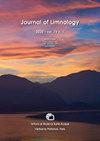Impacts of an extreme flood on the ecosystem of a headwater stream
IF 1.1
4区 环境科学与生态学
Q4 LIMNOLOGY
引用次数: 2
Abstract
Headwater streams are the smallest parts of rivers but make up the majority of river miles. The chemistry and macroinvertebrate composition of such streams are among the most important indicators of their environmental health. Macroinvertebrates are affected namely by runoff genesis and, in many regions of the world, also by acid atmospheric deposition and its consequences. The aim of this paper is to evaluate the impacts of an extreme summer flash flood on the physical environment, chemistry and macroinvertebrates in a small headwater stream located in the Beech-woods National Nature Reserve of the Jizera Mts. (Northern Bohemia, Czech Republic). The studied stream is characterized by a pluvial hydrologic regime with perennial streamflow uniformly distributed within the year, with peak-flows originating mainly from summer rainstorms, and moderate current anthropogenic acidification. During the observed summer flash flood of the return period near 1,000 years, high currents (1-2.5 m s–1) flushed out 2.7 m3 of sand and gravel from the streambed, resulting in a devastating effect on macroinvertebrates. Both number of species/taxa and diversity were reduced by about 50% while the abundance of surviving taxa was reduced to about 10% compared with before the flood. The following spring after the event, both number of species/taxa, diversity and abundance increased, partially due to the temporary unsuccessful colonization of the site by several alien species creating a peak of biological diversity, but complete recovery of the original macroinvertebrate assemblages was not observed even during the subsequent two years. On the other hand, a significant drop in sulphate contents and rising alkalinity observed in stream waters during base flow conditions after the flood indicate positive effects on recovery of the aquatic environment by depleting the catchment sulphur pool. Thus, the flood did not significantly alter the long-term recovery of the studied headwater stream from acidification. Corresponding author: josef.krecek@fsv.cvut.cz极端洪水对水源生态系统的影响
源头溪流是河流中最小的部分,但却占了河流里程的大部分。这些溪流的化学成分和大型无脊椎动物组成是其环境健康的最重要指标之一。大型无脊椎动物主要受到径流的影响,在世界许多地区,还受到酸性大气沉积及其后果的影响。本文旨在评价夏季极端山洪对捷克Jizera山山毛榉国家级自然保护区一个小源头溪流的物理环境、化学和大型无脊椎动物的影响。研究的河流具有多年径流年内均匀分布的多雨水文特征,峰值流量主要来源于夏季暴雨,目前人为酸化程度适中。在观测到的近1000年回归期夏季山洪中,高水流(1-2.5 m s-1)从河床冲走了2.7 m3的沙砾,对大型无脊椎动物造成了毁灭性的影响。与洪水前相比,物种/分类群数量和多样性减少了约50%,幸存分类群的丰度减少了约10%。事件发生后的第二年春天,物种/分类群的数量、多样性和丰度都有所增加,部分原因是一些外来物种暂时不成功地在该地点定居,创造了生物多样性的高峰,但即使在随后的两年里,也没有观察到原始大型无脊椎动物群落的完全恢复。另一方面,在洪水过后的基流条件下,溪流中硫酸盐含量显著下降,碱度上升,这表明通过耗尽集水区硫池,对水生环境的恢复有积极影响。因此,洪水并没有显著改变研究的水源从酸化的长期恢复。通讯作者:josef.krecek@fsv.cvut.cz
本文章由计算机程序翻译,如有差异,请以英文原文为准。
求助全文
约1分钟内获得全文
求助全文
来源期刊

Journal of Limnology
地学-湖沼学
CiteScore
2.70
自引率
6.20%
发文量
12
审稿时长
3 months
期刊介绍:
The Journal of Limnology publishes peer-reviewed original papers, review papers and notes about all aspects of limnology. The scope of the Journal of Limnology comprises the ecology, biology, microbiology, physics, and chemistry of freshwaters, including the impact of human activities, management and conservation. Coverage includes molecular-, organism-, community-, and ecosystem-level studies on both applied and theoretical issues. Proceedings of workshops, specialized symposia, conferences, may also be accepted for publication.
 求助内容:
求助内容: 应助结果提醒方式:
应助结果提醒方式:


